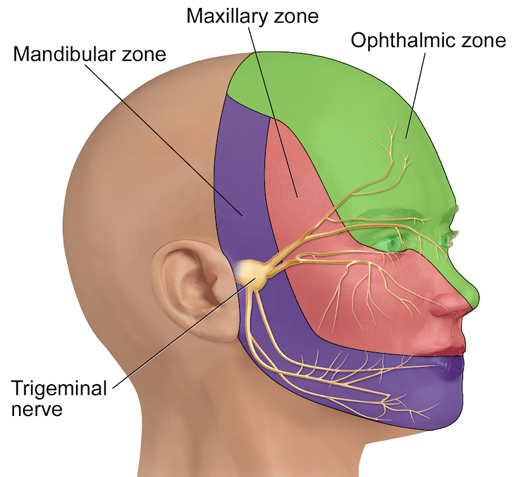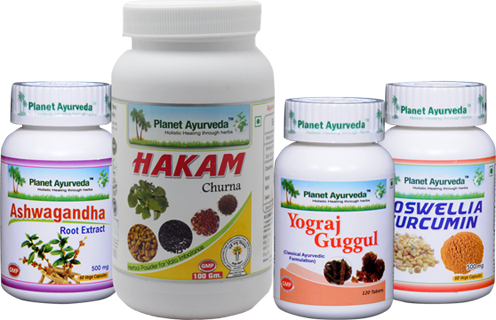Abstract
Trigeminal Neuralgia (TN) is a painful condition that causes sudden, sharp and stabbing pain along the face, usually triggered by simple activities like talking, chewing, or even a light touch. It's often described as one of the most agonizing conditions a person can experience. While it's rare, it mainly affects people over 50 and is more common in women. The pain comes from irritation or compression of the trigeminal nerve, though sometimes it’s linked to conditions like multiple sclerosis. The condition affects about 4-5 people per 100,000 each year. The condition can have a big impact on daily life, as the pain can be both sudden and severe, making everyday tasks difficult to manage.

Introduction
Trigeminal neuralgia is also known as tic douloureux, a French term that roughly translates to "painful tic" or "painful twitch." The term tic douloureux highlights the disruptive nature of the condition, as it can occur suddenly and unpredictably, leading to significant discomfort and distress for those who suffer from it. This intense pain typically affects one side of the face and is usually triggered by everyday activities like talking, chewing, or even mild touch.
The Trigeminal Nerve
The trigeminal nerve is the fifth cranial nerve and is one of the largest nerves in the head. It has both sensory and motor functions, making it essential for sensation in the face and controlling certain movements, such as biting and chewing. The nerve is divided into three major branches, Ophthalmic branch (V1), Maxillary branch (V2) and Mandibular branch (V3). Disruption or irritation of the trigeminal nerve, as seen in conditions like trigeminal neuralgia, can cause intense pain and loss of sensation in the areas it serves.
Causes of Trigeminal Neuralgia
Trigeminal neuralgia can be caused by several factors, they are as follow:
- Blood vessel pressing on the nerve
- Multiple sclerosis
- Tumor pressing on the nerve
- Cyst or lesion affecting the nerve
- Trauma to the face or head
- Infections like shingles affecting the nerve
- Idiopathic causes in some cases
Triggers of Trigeminal Neuralgia
Common triggers of trigeminal neuralgia include:
- Touching the face
- Chewing
- Talking
- Brushing teeth
- Shaving
- Smiling
- Yawning
- Drinking hot beverages
- Cold drinks or food
- Brushing hair
- Rubbing eyes
Symptoms of Trigeminal Neuralgia
The symptoms of trigeminal neuralgia include:
- Sudden, severe pain or electric shock-like pain, typically on one side of the face
- Pain episodes can be triggered by light touch, chewing, speaking, brushing teeth, or even a breeze on the face
- The pain typically affects the forehead, cheeks, jaw, and teeth, areas served by the trigeminal nerve.
- Short episodes of pain that usually last for a few seconds to 2 minutes.
- Unilateral pain
- The affected area of the face may become overly sensitive to touch or certain movements.
Diagnosis
The diagnosis of trigeminal neuralgia typically involves the following steps:
- Medical history
- History of injury or any other past illness
- Symptoms review
- Pain patterns
- Triggers
- Neurological examination
- To check reflexes, sensation, and motor functions of the face
- Imaging tests
- MRI
- CT
Differential Diagnosis
Differential diagnosis for trigeminal neuralgia involves ruling out other conditions that could cause similar facial pain. These include:
- Tooth infections, abscesses, or cavities
- Temporomandibular Joint (TMJ) Disorders
- Sinusitis
- Cluster headache
- Migraine
- Glossopharyngeal Neuralgia
Management
Management of trigeminal neuralgia involves:
- Lifestyle changes
- Avoid triggers
- Apply warm compression to the face
- Eating soft food
- Avoid extremely hot or cold food
- Stress management
- Medications
- Anticonvulsants
- Muscle relaxant
- Antidepressant
- Vitamin B12
- Surgery
- Microvascular Decompression
- Gamma Knife Radiosurgery
- Rhizotomy
Ayurvedic Aspect
In Ayurveda, Trigeminal Neuralgia can be closely compared to Anantavata due to the striking similarities in their signs and symptoms. It is one of the 11 types of shiroroga (head disease). Anantavata (trigeminal neuralgia) is characterized by persistent, severe pain that affects the eyes, temples, and jaw. It is primarily caused by an imbalance of the tridoshas (vata, pitta and kapha), with the vata dosha being predominant. The nidana (causes) of Anantavata (trigeminal neuralgia) include factors like upavasa (fasting), ati shoka (excessive grief), consumption of sheeta bhojana (cold food), and atiruksha bhojana (dry food). Due to these nidana (causes) all three doshas (vata, pitta and kapha) become simultaneously vitiated and localised in the manya (neck), netra (eyes), bhru (eyebrows), and shankha pradesha (temples), leading to intense pain. This causes symptoms such as kampa (tremors), eye disorders, and hanugraha (jaw stiffness). These clinical features align closely with the painful episodes experienced in Trigeminal Neuralgia, making anantavata a relevant ayurvedic comparison. Ayurvedic treatments, particularly vaatahara (vata-balancing) and brihmana (nourishing) therapies are done to balance vata dosha and alleviating the symptoms of anantavata (trigeminal neuralgia).
Ayurvedic herbs that are used in the management of anantavata (trigeminal neuralgia) involves:
- Brahmi (Bacopa monnieri) - Supports brain health, calms nerves, reduces stress.
- Turmeric (Curcuma longa) - Anti-inflammatory, reduces pain and inflammation.
- Guggul (Commiphora mukul) - Improves circulation, reduces inflammation, balances Vata.
- Guduchi (Tinospora cordifolia) - Detoxifies, strengthens immunity, reduces pain.
- Shankhapushpi (Convolvulus pluricaulis) - Enhances brain health, relieves nerve pain.
- Ashwagandha (Withania somnifera) - Reduces stress, strengthens nervous system, balances Vata.
- Vacha (Acorus calamus) - Nerve tonic, calms nervous system, improves cognition.
- Curcumin (Curcuma longa) - Reduces pain and inflammation in nerve-related conditions.
- Shallaki (Boswellia serrata) - Acts as an analgesic, helpful in alleviating nerve pain.
- Chandan (Santalum album) - Cooling, anti-inflammatory, soothes irritated nerves.
Herbal remedies for Trigeminal Neuralgia by Planet Ayurveda
Planet Ayurveda is committed to offering high-quality products made from premium herbal extracts. Each product is thoughtfully formulated under expert supervision to guarantee optimal effectiveness. The company focuses on using preservative-free ingredients to minimize the risk of potential side effects. A highlight of their offerings is the Trigeminal Neuralgia Care Pack, specifically created to assist those managing Trigeminal Neuralgia.
Trigeminal Neuralgia Care Pack
Product description
1. Boswellia Curcumin
These capsules combine two powerful herbs, Shallaki (Boswellia serrata) and Curcumin (Curcuma longa), known for their anti-inflammatory and antioxidant benefits. These herbs are effective in alleviating inflammation in muscles, bones, tendons, as well as in treating skin conditions and allergies. With their antiseptic, anti-inflammatory, and antioxidant properties, they help improve circulation and provide pain relief, making them beneficial in managing pain associated with conditions like trigeminal neuralgia.
Dosage : 2 capsules twice a day after meal with warm water.
2. Hakam Churna
This churna is a blend of various herbs, including Chandershoor (Lepidium sativum), Kalonji (Nigella sativa), and Methi (Trigonella foenum-graecum), among others. These herbs work synergistically to support the body's healing process and can be beneficial in managing conditions like trigeminal neuralgia by reducing inflammation, improving circulation, and promoting overall nerve health.
Dosage : 1 tsp twice a day after a meal with warm water.
3. Ashwagandha Capsules
These capsules are formulated using a standardized extract of Ashwagandha (Withania somnifera), a well-known herb for promoting optimal neurological health. It possesses medhya (intellect-promoting), rasayan (rejuvenating), and dhatu pushti (tissue-strengthening) properties. Ashwagandha helps balance all three doshas, particularly calming vata and kapha. Its bitter and astringent taste, along with its hot potency and pungent after-effect, contribute to its ability to support brain and nerve health, making it beneficial for managing conditions like trigeminal neuralgia.
Dosage : 1 capsule twice a day after a meal with warm water.
4. Yograj Guggul
It is made with potent herbs like Guggul (Commiphora mukul), Pippali (Piper longum), Jeeraka (Cuminum cyminum), and several other herbs. This classic Ayurvedic remedy is crafted to enhance the strength of the body, muscles, and bones while also nourishing the nerve sheaths, helping to shield them from damage. It supports overall nerve health, making it beneficial for conditions like trigeminal neuralgia.
Dosage : 2 tablets twice a day after a meal with warm water.
Conclusion
In this article I have concluded about trigeminal neuralgia. We discussed its causes, triggers, symptoms, diagnosis, differential diagnosis, management, ayurvedic aspect and herbal remedies by planet ayurveda. A combination of medications, lifestyle adjustments, and in some cases, surgical interventions, can provide relief. Herbal remedies and Ayurvedic treatments for Trigeminal Neuralgia may also support the management of symptoms, offering additional options for those seeking a holistic approach to care.
















